Yesterday, I stumbled onto the KQED YouTube video about making memes. I love memes! They’re witty, relatable, and often capture a truth about life in a way that words alone cannot. A meme is a humorous image, video, or text that is copied, often with slight variations, and spread rapidly across the internet.
As I watched, I started wondering: How could I incorporate memes into my English class in a meaningful way? The timing was perfect. We are just wrapping up The Joy Luck Club, and I had the computer lab booked!
The Assignment: Meme-Making with a Purpose
Rather than asking students to summarize the book or analyze a passage in a traditional essay format, I decided to challenge them to create their own memes—not about the novel itself, but about one of its central themes. I wanted students to make clever, insightful commentaries on life that reflected the same struggles we had explored in the novel.
To get them thinking, I started by sharing a few example memes. These focused on:
- Power struggles between children and their parents.
- Unrealistic expectations set by family members.
- The challenges of growing up and defining one’s identity.
We discussed how humor, irony, and exaggeration could be used to highlight these themes in ways that are both relatable and thought-provoking. I also encouraged students to consider their audience—Who would “get,” or understand, their meme? Who might relate to it the most?
Creativity Meets Critical Thinking
Once they had a solid understanding of the task, students jumped in. They scrolled through meme generators, brainstormed taglines, and debated whether their captions were too specific or universally relatable. It was fascinating to watch them engage with literature in this way—pulling from their own experiences while also drawing connections to the themes of The Joy Luck Club.
Some students created memes about immigrant parents and their high expectations, while others tackled the awkwardness of navigating two cultures at once. A few even explored the idea of generational trauma in a way that was surprisingly profound for a meme format
Here’s a progression you can follow to guide students:
Step 1: Decide on a Theme
Ask students to identify a theme they want to focus on when they create their memes.
Step 2: Complete an Advanced Google Search
Show your students how to do an Advanced Google Search to find images labeled for reuse. Most students probably haven’t ever done an advanced image search. Unfortunately, many teens grab and reuse images online without permission, so this is an important life lesson.

Step 3: Decide on an Image
Once they’ve decided on an image, have them save the picture to their device or take a screenshot.

Step 4: Upload the Image to a Google Drawing
Ask students to log into their Google Drive, create a new Google Drawing, and upload their image. If you are using Google Classroom or Doctopus, you can create a Drawing for your students. If your students create their own Google Drawings, remind them to use a standard naming convention (e.g., Class Name—Last Name—Theme Meme).
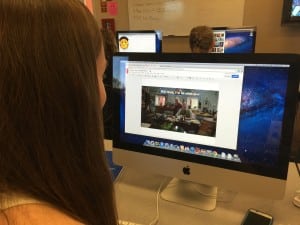
Step 5: Add Clever Text!
Ask students to add text to their images to create memes. I reminded my students that their mix of media and text should send a clear and interesting message about their chosen theme.
Here are some of the memes my students created!
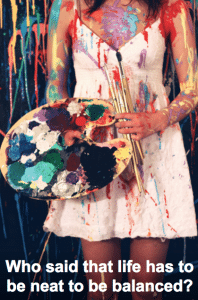
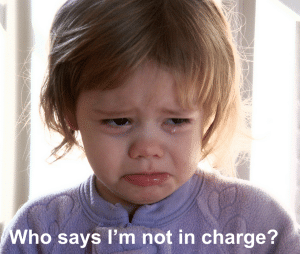

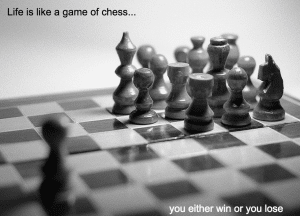
Teacher Tip: If you aren’t using Google Classroom or Doctopus, an easy way to collect all of your students’ memes is to ask students to complete a Google Form like the one below. That way, all the information and URLs of their Google Drawings are stored in a Google Spreadsheet.


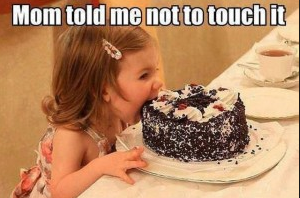
21 Responses
Love this, Catlin. I’m going to find a way to use it with my freshmen soon. Thanks for the idea!
You’re welcome, Janelle!
[…] Reposted from Catlin Tucker’s blog: […]
I love this idea, Catlin!
We did a similar project with our Middle School girls, having them create memes based on respect after a unit on respect and digital citizenship. The girls loved it!
I especially like your idea of collecting the student’s work through a Google Form! That is genius!
M
That’s a great way to use memes, Mary! I also focus on digital citizenship/online communication at the start of the year. I love the idea of using memes for that.
Yes, Google forms are a great way to collect URLs for online work! It’s been a huge time saver for projects like this and organizing blogs.
Catlin
This is such a clever idea! Not only do students get a multimodal way to think about and express themes in novels, but they also exploring their creativity. What I especially love is that students will now have an image to associate with their theme, which will help them both remember and express their interpretation more eloquently than without visual aid. It would be a wonderful scaffolding activity for an essay. I also think this gives them a great opportunity to bring their humor into the classroom, which I am always in support of! Thanks for the idea!
You’re so welcome, Tori! The students really enjoyed working on it too, which was awesome to watch.
Take care.
Catlin
[…] example, Ms. Tucker recently explained how she had her students create a meme for their area of study. She excels at explaining each step of the process that uses an advanced […]
[…] Yesterday, I stumbled onto the KQED YouTube video about making memes. I love memes! A meme is a humorous image, video, piece of text, etc. that is copied–often with slight variations–and spread rapidly by Internet users. I decided I wanted to find a way to incorporate memes in my English class. […]
I used meme for the first time this past year with my 9th grade world history class. They created meme explaining the philosophies of Enlightenment thinkers. Even though many of them used the same image, they development their own statements for each thinker. It was a great way for them to show what they understand about each thinker in a quick shot. Thanks for sharing this.
That’s a great idea, Dan! I’ll pass that onto my husband who teaches AP World History. Maybe he can try that.
Thanks for sharing!
Catlin
[…] By Catlin Tucker [see original post here] "Yesterday, I stumbled onto the KQED YouTube video about making memes. I love memes! A meme is a humorous image, video, piece of text, etc. that is copied–often with slight variations–and spread rapidly by Internet users. I decided I wanted to find a way to incorporate memes in my English class. The timing was perfect. We are just wrapping upThe Joy Luck Clu and I had the computer lab booked!I decided to have students create an original meme focused on one of the major themes we discussed from the novel. I was clear to tell that the meme was not about the novel, but rather dealing with a similar theme. I wanted their memes to be clever commentaries on life.I shared a few memes that deal with the power struggles between children and their parents, unrealistic parent expectations, and the challenges of growing up. https://www.facebook.com/MommyMemesHere’s a progression you can follow to guide students:Step 1: Decide on a ThemeAsk students to identify a theme they want to focus on when they create their memes.Step 2: Complete an Advanced Google SearchShow your students how to do an Advanced Google Search to look for images that have been labeled for reuse. Most students probably haven’t ever done an advance image search looking for images labeled for reuse. Unfortunately, many teens grab images online and reuse them without permission, so this is an important life lesson. Step 3: Decide on an ImageOnce they’ve decided on an image, have them save the picture to their device or take a screenshot.Step 4: Upload the Image to a Google DrawingAsk students to log into their Google Drive and create a new Google Drawing and upload their image. If you are using Google Classroom or Doctopus, you can create a Drawing for your students. If your students create their own Google Drawings, remind them to use a standard naming convention (e.g. Class Name – Last Name – Theme Meme).Step 5: Add Clever Text! Ask student to add text to their image to create their memes. I reminded my students that their mix of media and text should send a clear and interesting message about their chosen theme."…For original post, please click on title above or here: http://cluttered-record.flywheelsites.com/2015/02/create-original-theme-memes/ […]
[…] Yesterday, I stumbled onto the KQED YouTube video about making memes. I love memes! A meme is a humorous image, video, piece of text, etc. that is copied–often with slight variations–and spread rap… […]
I LOVE THIS IDEA
[…] T.A. What’s an Adolescent Brain’s Weakness? Other Tweens #edchat #ptchat #neuroscience. Creating Memes to Explore Themes. 12 music-centric tools that really strike a chord #edchat #musicchat. Infographic & article-a […]
Is it necessary to have the URL on the Google Form if my class is doing it through Google Classroom?
Nope! I had to collect info/links via Forms before Google Classroom came along and made my life a million times easier!
Catlin
Be careful using Google Advanced search for images. Some images may be labeled for reuse by whom ever posted them, but they could still be copyrighted images. Try using Flikr and search for photos using CC Licensing that allows reuse with attribution.
You may also find images I. wikiComkons, but it often has the same issue
ISTE recently posted an article to help teachers and students find copyright free images and sounds. https://www.iste.org/explore/articleDetail?articleid=265
Thank you for sharing this, Tony!
Love it! My students made memes last year for Julius Caesar but then I struggled with how to assess. Do you count these as a formative and give a completion grade or a summative? Do you use a rubric to assess?
Hi Claire,
When we did it as a project, I assessed them on two criteria: 1) clarity of theme (did they effectively communicate a central theme) and 2) creativity (was the meme clever and creative). I always use a 1-4 scale with 1=beginning, 2=developing, 3=proficient, 4=mastery.
Catlin